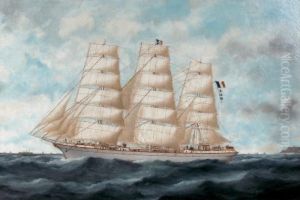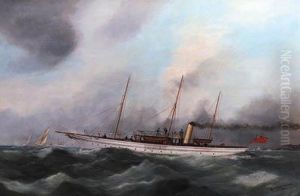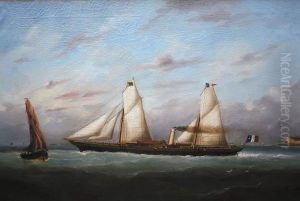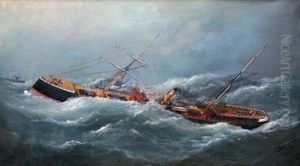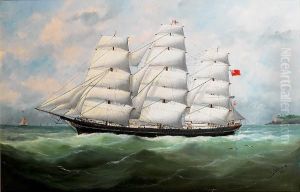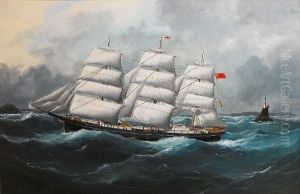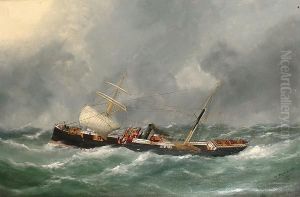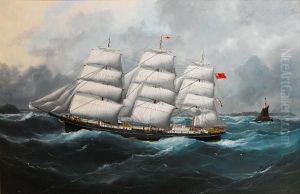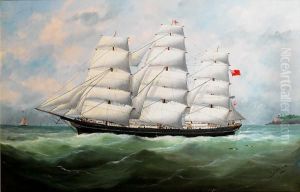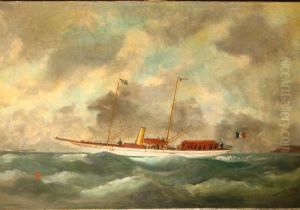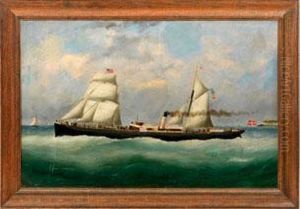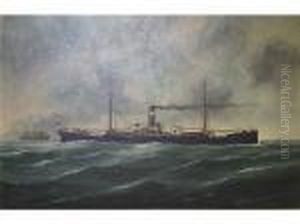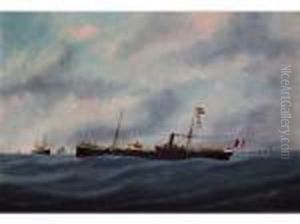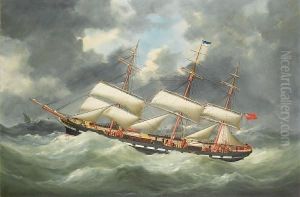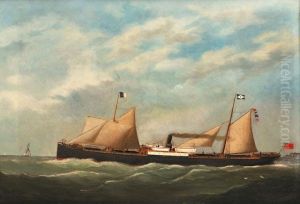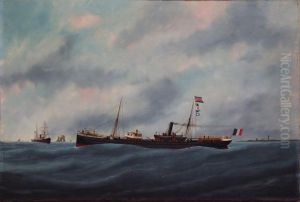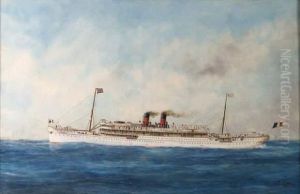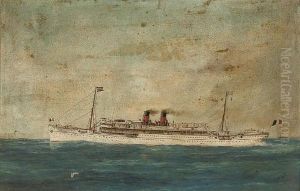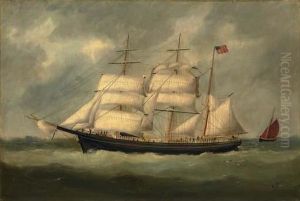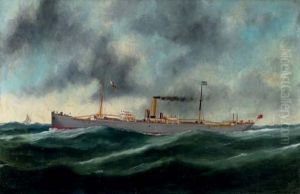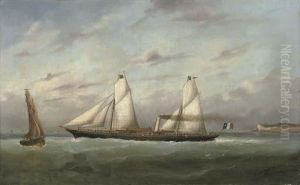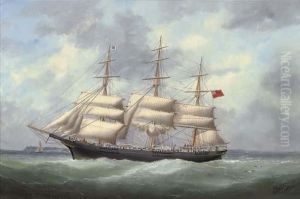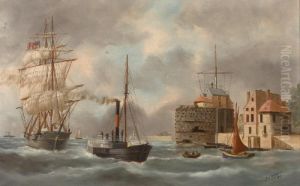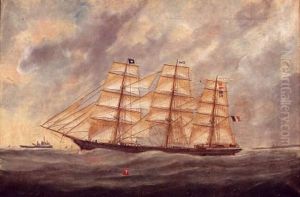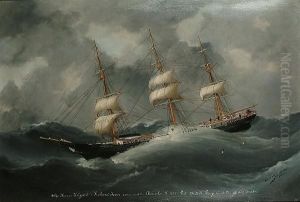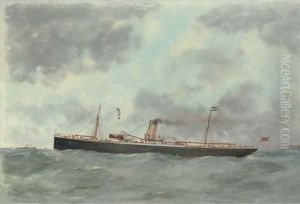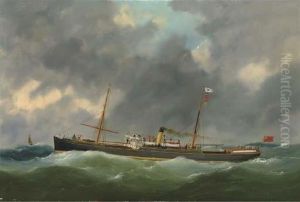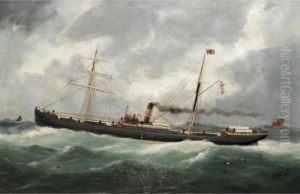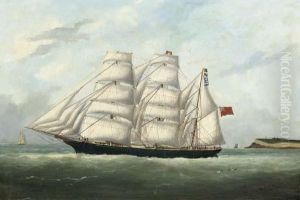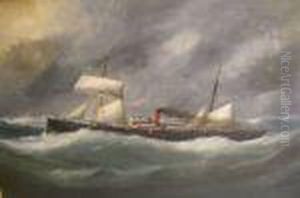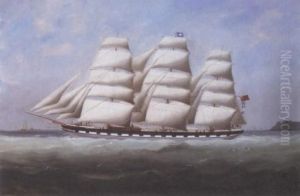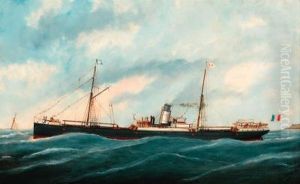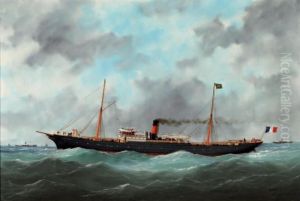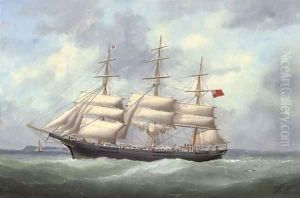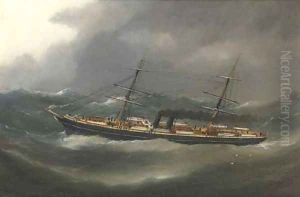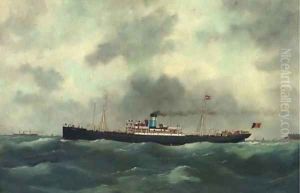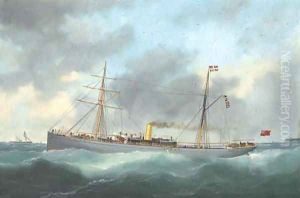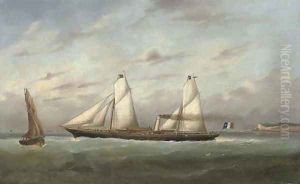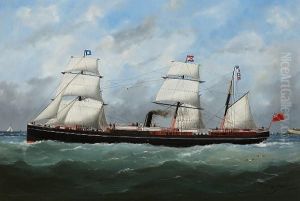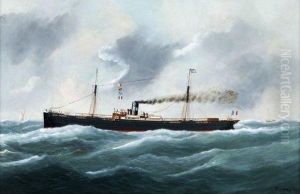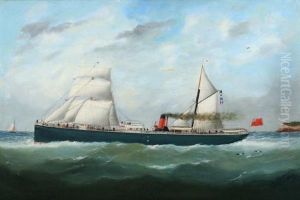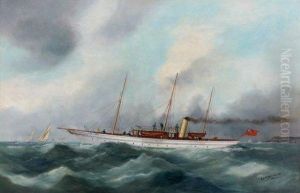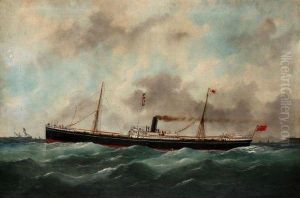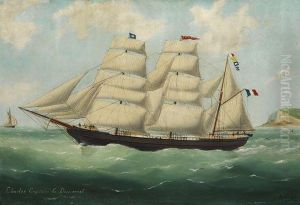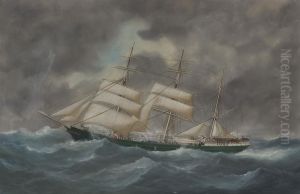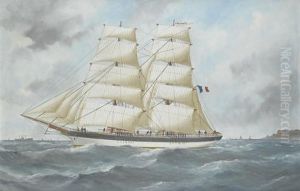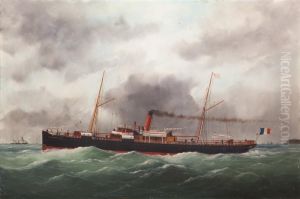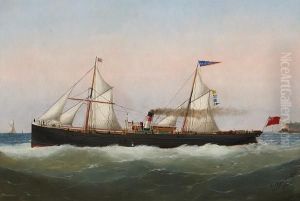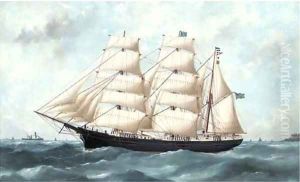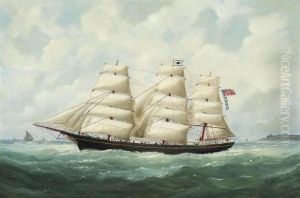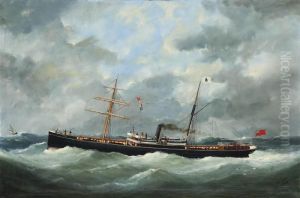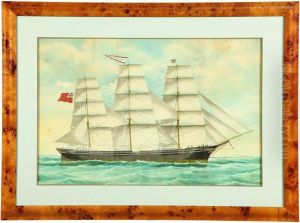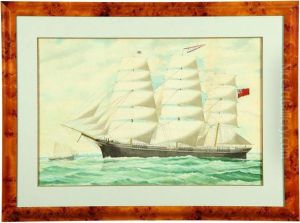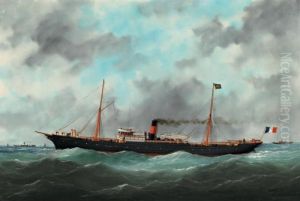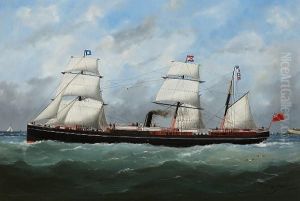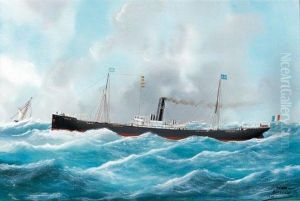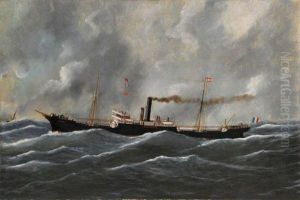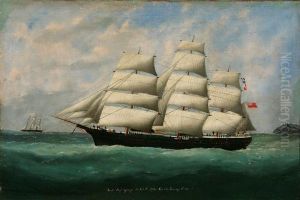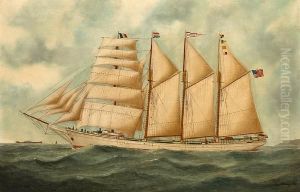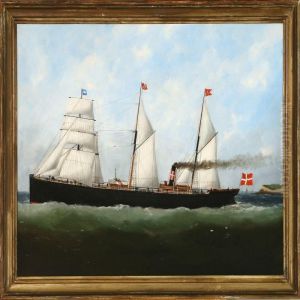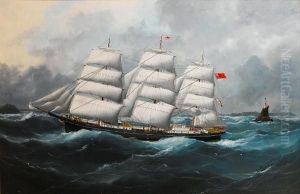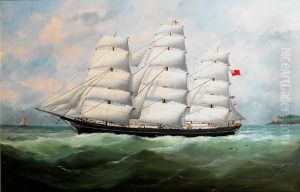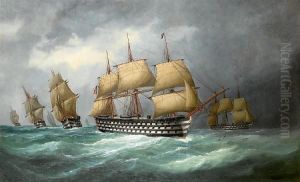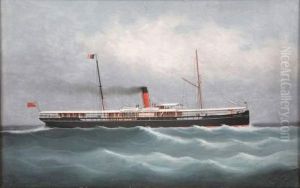Marie-Edouard Adam Of Le Havre Paintings
Marie-Edouard Adam, often referred to as Edouard Adam of Le Havre, was a French marine painter born on April 14, 1847, in Le Havre, France. His artistic career was deeply influenced by his birthplace, a vibrant port city, which instilled in him a profound appreciation for the sea and maritime life. Adam came from a family of painters, which included his father, Antoine Adam, and his grandfather, Jean Adam, both of whom were also respected marine artists. This familial artistic lineage provided a rich environment for his development as a painter.
Adam's work mainly focused on seascapes, ships, and harbor scenes, which he executed with meticulous attention to detail and a deep understanding of maritime subjects. His talent for capturing the essence of the sea and the vessels that traversed it made him a popular artist among ship owners and maritime enthusiasts who sought his work for their private collections.
During his lifetime, Edouard Adam became renowned for his expertise in painting specific types of ships with accuracy, such as clippers, steamers, and sailing ships. He was particularly adept at rendering the complex riggings and architecture of these vessels. His paintings not only depicted the ships in all their glory but also often included the dynamic activity of the port, offering a glimpse into the maritime life of the period.
Adam's contribution to marine art was recognized beyond his native France. He exhibited his work at various salons and exhibitions, earning accolades for his artistic skill. Despite the popularity of his maritime subjects, relatively little is known about his personal life, as he tended to keep his private affairs out of the public eye.
Marie-Edouard Adam passed away in 1929, leaving behind a legacy of marine paintings that continue to be celebrated for their historical value and artistic merit. His works remain a testament to the golden age of sail and steam and provide an invaluable visual record of the maritime history of the 19th and early 20th centuries.
